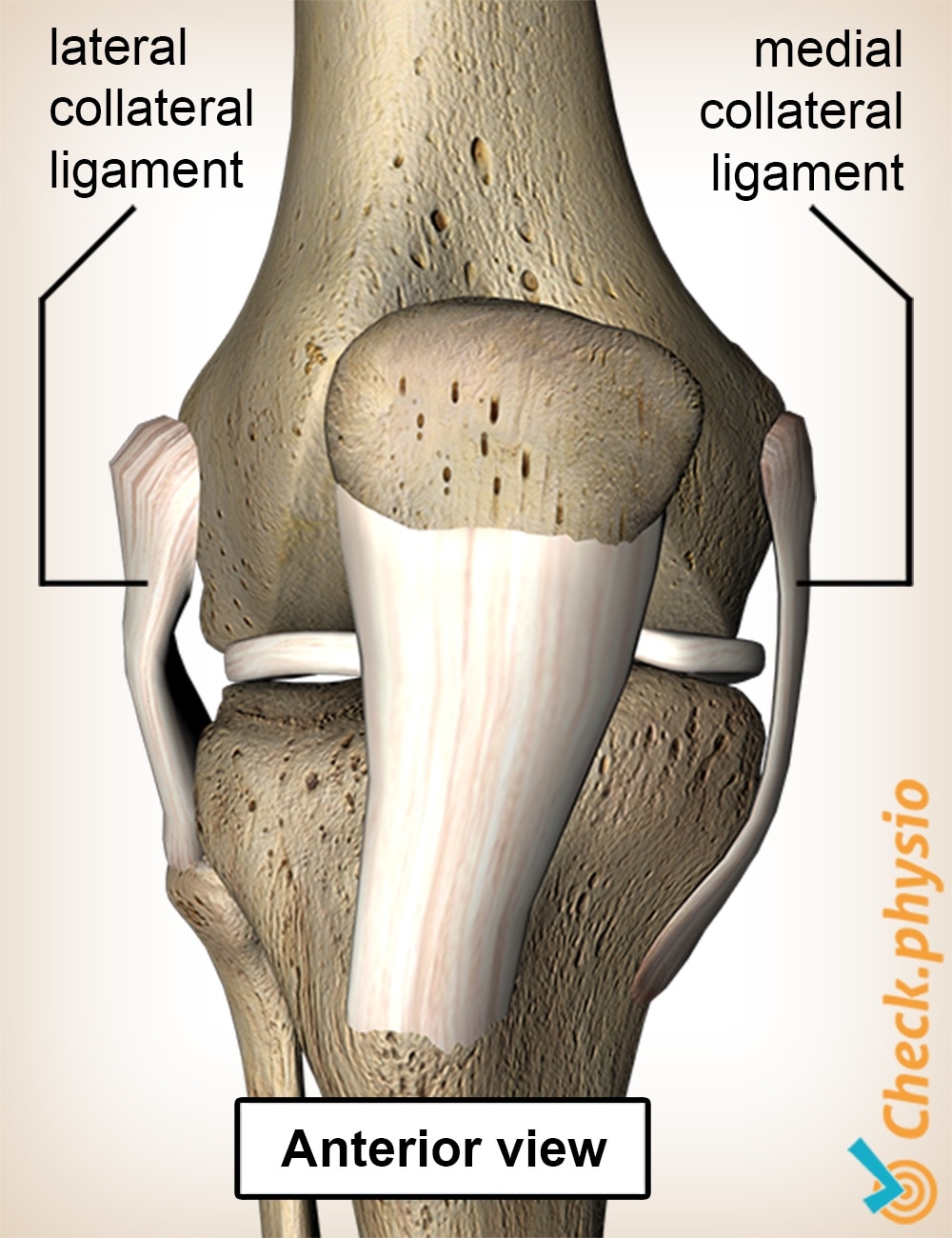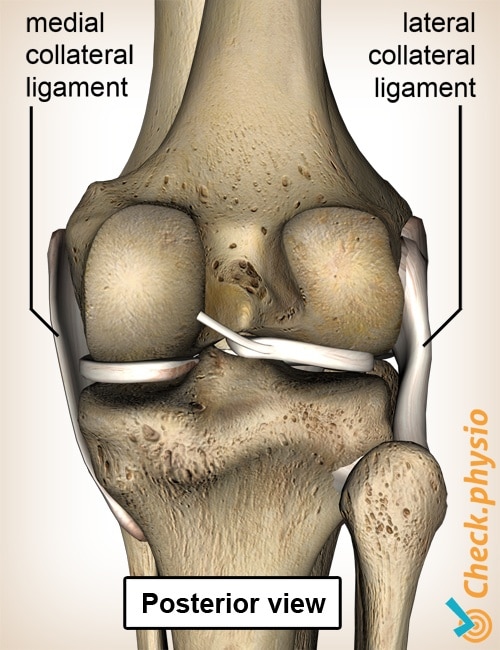Lateral knee ligament injury
Lateral collateral ligament sprain or rupture
The lateral knee ligament is located on the outside of the knee. It connects the side of the thigh bone (femur) to the side of the calf bone (fibula). The injury usually occurs as a result of a large external force on the knee.

The collateral knee ligaments are often confused with the cruciate ligaments. The medial collateral knee ligaments are located outside of the joint on both the outside and the inside of your knee. The cruciate ligaments are located in the center of the knee joint.
Description of condition
The most important function of the lateral knee ligament is to prevent an extreme varus position of the knee joint. This means that the lateral knee ligament prevents the knee joint from adopting an exaggerated O (bowed) position.
If the knee ligament is stretched too far, it may tear partially or completely.
Cause and history
Injury of the lateral knee ligament is common in sports such as football, soccer and martial arts. For example, as a result of a block tackle. The knee is hit on the inside, causing the lateral knee ligament - located on the other side of the knee - to be stretched due to excessive force. This can cause tearing/rupture.
The symptoms may also occur during a fall. The way in which a person falls determines whether the knee ligament is stretched or not and whether damage occurs.
Signs & symptoms
The pain is located on the outside of the knee at the level of the lateral knee ligament. The knee ligament is sensitive to the touch. The pain can also be provoked by stretching the ligament. The knee feels unstable and this may be accompanied by swelling.
Diagnosis
The way in which the symptoms developed and their location provide a good first indication of the injury. During the examination, the ligament may be stretched to confirm any injury.
The ligament is rarely the only structure affected. The anterior and the posterior cruciate ligaments may also be damaged and should be checked during the examination.
Treatment
The lateral knee ligament does not heal as well as the medial knee ligament. Rest and physiotherapy can provide relief if the ligament is not severely ruptured. Surgery may be required if the lateral knee ligament is ruptured completely. If the patient experiences problems while exercising or performing daily activities, a knee brace can offer support for the weakened ligament and may prevent the symptoms from becoming worse.
Exercises
Look here for the exercise program with exercises for the outer knee ligament injury.
You can check your symptoms using the online physiotherapy check or make an appointment with a physiotherapy practice in your locality.

References
Brooijmans, F., Huiberts, L., Hekking, J. & Lataster, A. (2011). Kan de fysiotherapeut acute knieletsels adequaat diagnosticeren. Physios: 2011-1-5.
Brooijmans, F.A.M., Lenssen, A.F.T., Melick, N. van, Knoop, J., Rondhuis, G. †, Neeleman-van der Steen, C.W.M., Tak, I.J.R., Hullegie, W., Hendriks, E. & Janssen, R.P.A. (2015). KNGF Evidence Statement. Acuut knieletsel. V-27/2015.
Verhaar, J.A.N. & Linden, A.J. van der (2005). Orthopedie. Houten: Bohn Stafleu van Loghum.



